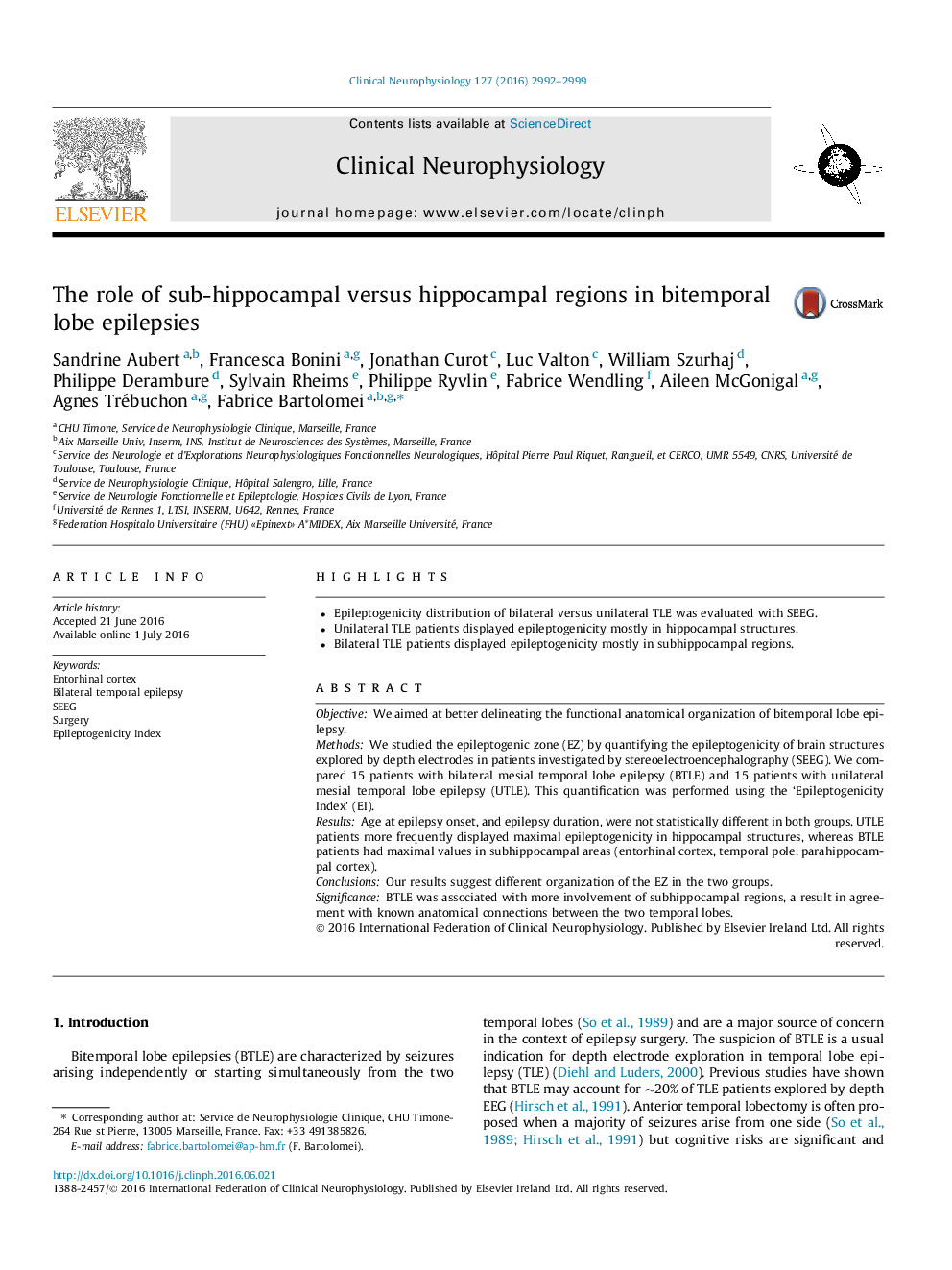| Article ID | Journal | Published Year | Pages | File Type |
|---|---|---|---|---|
| 6007266 | Clinical Neurophysiology | 2016 | 8 Pages |
â¢Epileptogenicity distribution of bilateral versus unilateral TLE was evaluated with SEEG.â¢Unilateral TLE patients displayed epileptogenicity mostly in hippocampal structures.â¢Bilateral TLE patients displayed epileptogenicity mostly in subhippocampal regions.
ObjectiveWe aimed at better delineating the functional anatomical organization of bitemporal lobe epilepsy.MethodsWe studied the epileptogenic zone (EZ) by quantifying the epileptogenicity of brain structures explored by depth electrodes in patients investigated by stereoelectroencephalography (SEEG). We compared 15 patients with bilateral mesial temporal lobe epilepsy (BTLE) and 15 patients with unilateral mesial temporal lobe epilepsy (UTLE). This quantification was performed using the 'Epileptogenicity Index' (EI).ResultsAge at epilepsy onset, and epilepsy duration, were not statistically different in both groups. UTLE patients more frequently displayed maximal epileptogenicity in hippocampal structures, whereas BTLE patients had maximal values in subhippocampal areas (entorhinal cortex, temporal pole, parahippocampal cortex).ConclusionsOur results suggest different organization of the EZ in the two groups.SignificanceBTLE was associated with more involvement of subhippocampal regions, a result in agreement with known anatomical connections between the two temporal lobes.
